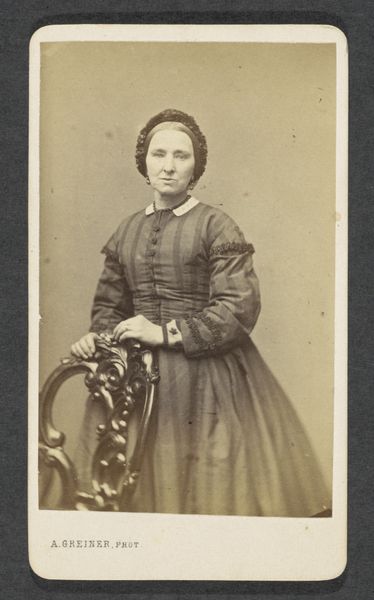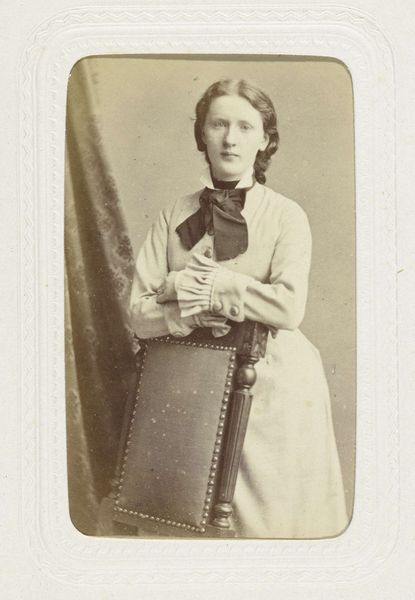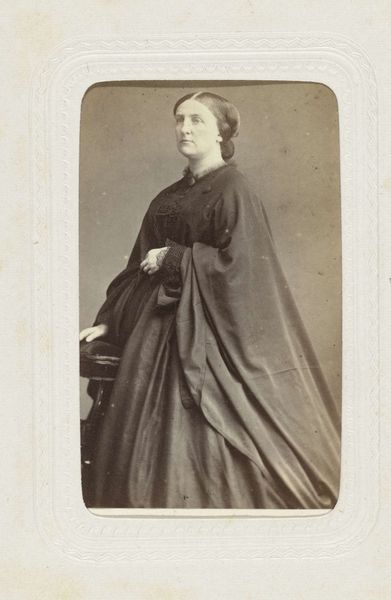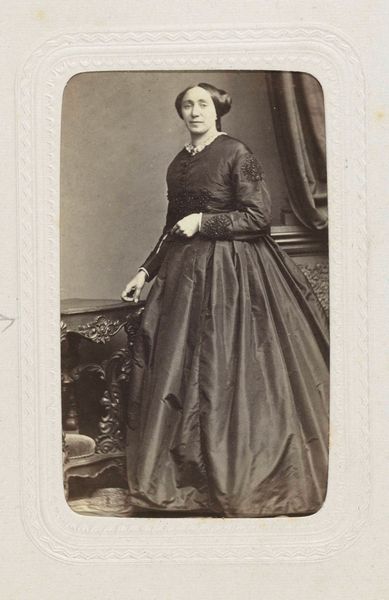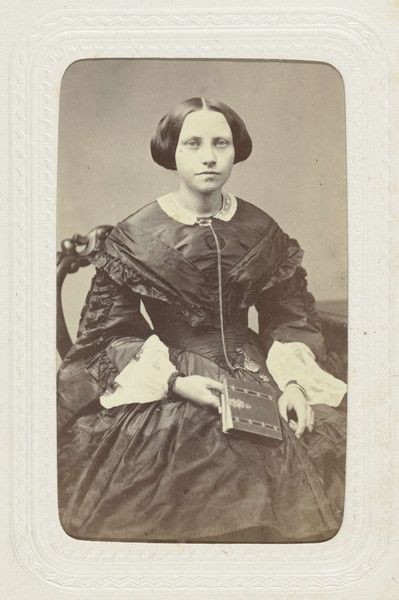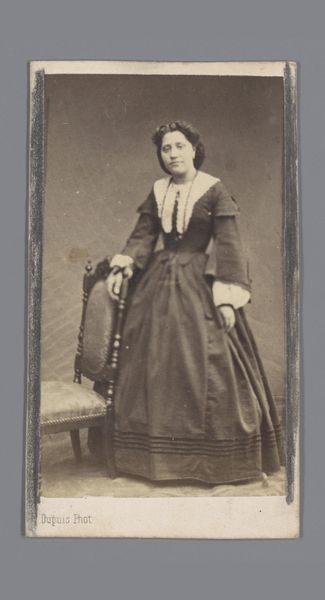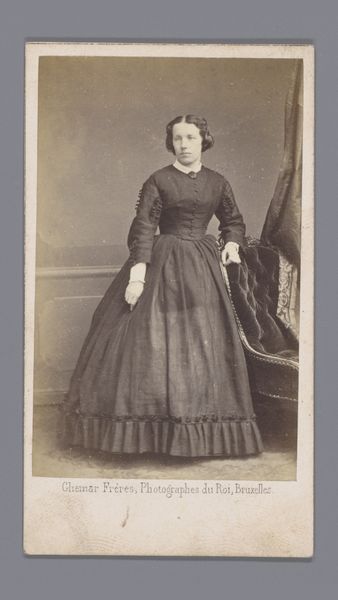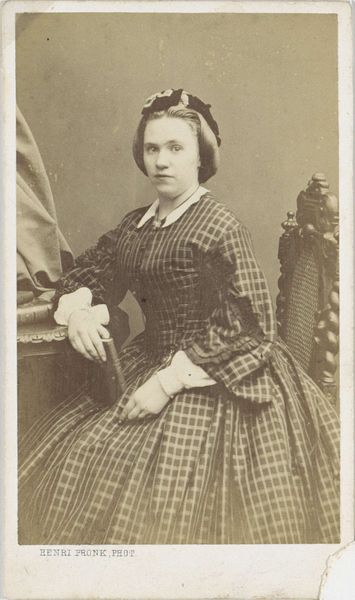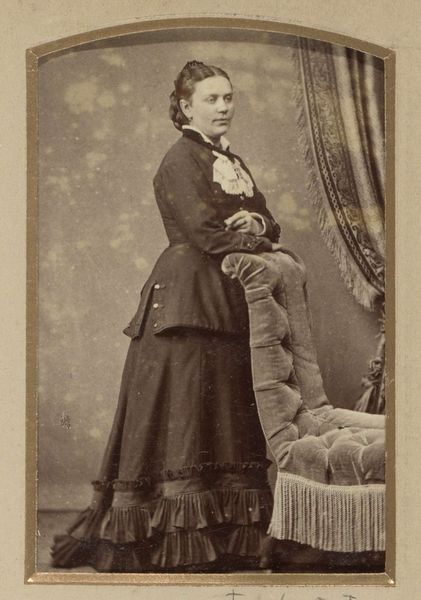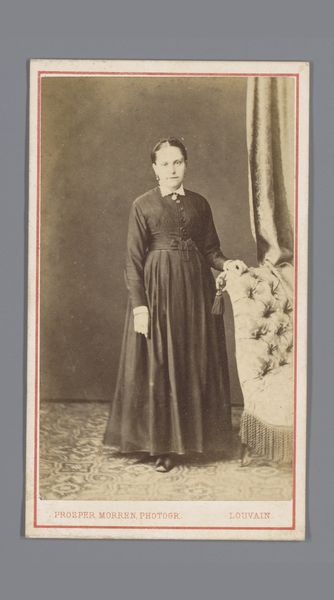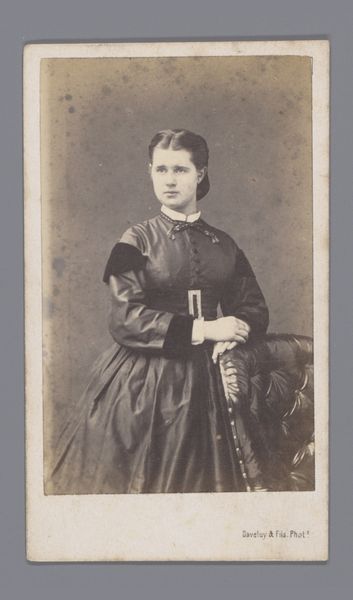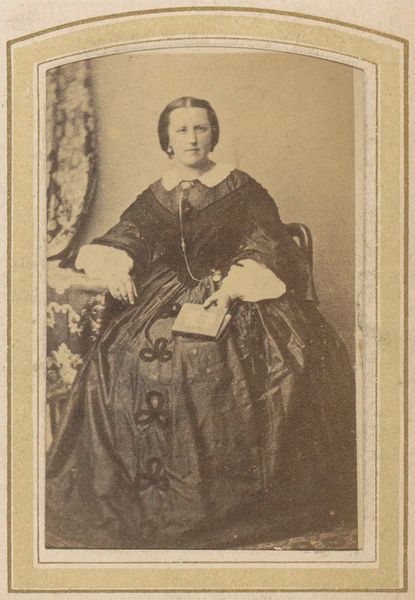
daguerreotype, photography
#
portrait
#
daguerreotype
#
photography
#
19th century
Dimensions: height 101 mm, width 62 mm
Copyright: Rijks Museum: Open Domain
Editor: So this is "Portret van een vrouw in een lange jurk," or "Portrait of a Woman in a Long Dress," by Kasparus Karsen, dating from around 1864 to 1895. It’s a daguerreotype. I’m immediately struck by the contrast between the woman's serious expression and the almost theatrical setting – the elaborate vase, her formal dress. What do you see in this piece? Curator: The vase itself whispers volumes. It’s a neoclassical form, prevalent in depictions of mourning and memory since antiquity. Its presence acts almost like a stand-in for her, symbolizing the ideals of the time – domesticity, decorum, but also loss, absence. The draped fabric can also denote hidden knowledge or suppressed emotion. Have you considered that it’s the Victorian Era, in full bloom, and therefore likely fraught with unexpressed feelings and coded symbols of loss? Editor: That’s interesting. I hadn’t considered the vase beyond its decorative function. So, you are saying it functions less as simple ornamentation and more as an emotional signifier? How does that tie into her attire? Curator: Her dark dress reinforces this somber mood, doesn't it? While not overt mourning garb, it carries that weight, and even the delicate flower in her hair does not lift the spirit of this representation. Note also the composition; the woman isn't centered. Is this a reflection on the prescribed role of women in that era? The lack of individual expression within those times? She is visually pushed aside by the vase and her melancholic pose and expression. Editor: I see. It feels like more than just a portrait of a woman. It’s more an artifact with hidden symbolism. Thank you for making the context visible. Curator: Exactly. Each element is deliberate, meant to be decoded. It's a testament to how much can be communicated through visual symbolism, and now, understanding how objects are used to stand in for deeper messages, we understand so much more than before.
Comments
No comments
Be the first to comment and join the conversation on the ultimate creative platform.
